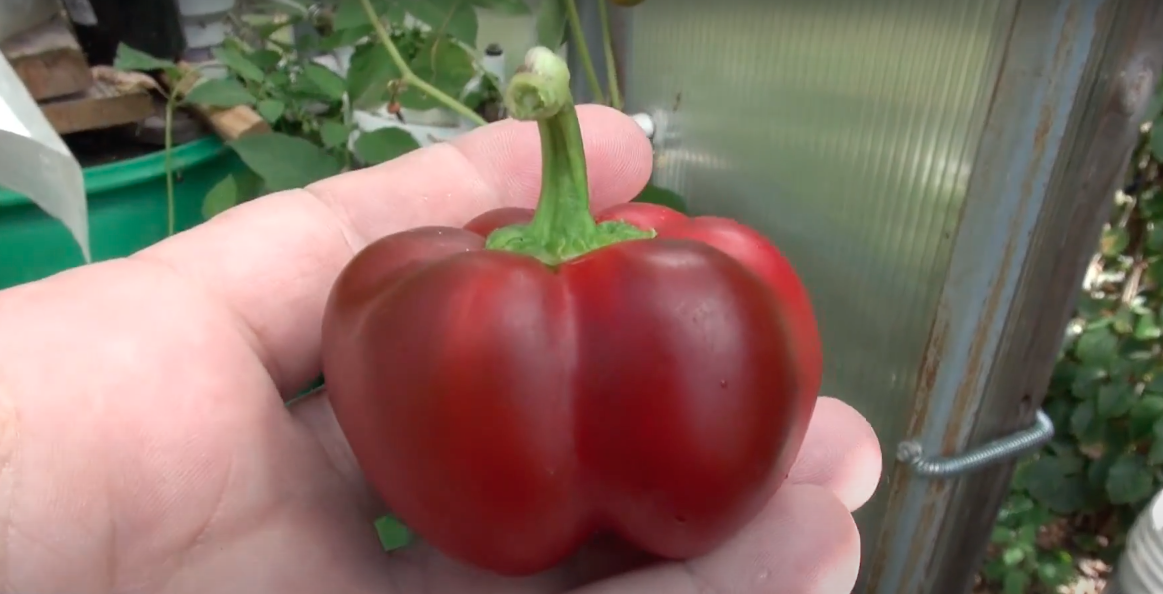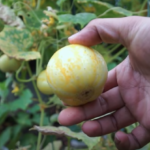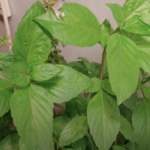Pimento peppers is an umbrella name encompassing a range of sweet pepper varieties that look somewhat similar to bell peppers but apparently differs in taste, shape and size. Pimento, also sometimes written as Pimiento, is Spanish for pepper. Depending on variety, the pepper can have an appearance of a miniature pumpkin, can be conical or heart-shaped with red or blood red skin and flesh when fully ripe. Just like bell peppers, pimento peppers have zero pungency and are used in a variety of culinary recipe applications.
Table of Contents
What are Pimento Peppers?
Pimento peppers are sweet peppers belonging to the Capsicum annuum species. They are of the Solanaceae or nightshade family. Other well known family members here include purple or white eggplant, potatoes, tomatoes and hot chili peppers themselves.
Pimentos do not grow tall. The plant remains relatively small and is infamous for being of limited productivity. For example, a single pimento pepper plant can produce as little as 2 peppers to as many as 15. In most cases growers can expect something in the middle from each plant.
Pimento peppers have very thick flesh and a core that is laden with seed. It is thus possible to easily save seed from pimentos following these simple steps. Pimentos will vary in color depending on how long they remain on the vine. Seed saving pimento peppers, for instance, are left to sit on the vine until they are fully mature at which point they will have a blood red color.
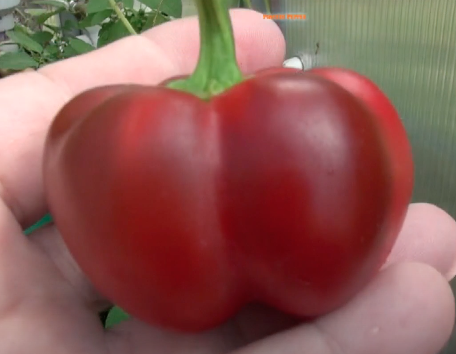

Depending on variety (see varieties section), some pimento fruit will have conical looking shapes while others can be heart shaped. There is yet a variety that produces miniature pumpkin looking fruit complete with ribs. This pimento pepper can be as wide as an apple in size at the top where fruit attaches to the stem.
If left on the vine, pimentos become increasingly sweet, as sweet as an apple. Growers have reported blind-folded tasters failing to tell apart a ripened pimento from an apple in sweetness. For this reason, some have christened the pimento – King of Sweet Peppers.
Pimento Pepper Variety and Seeds
As earlier stated, there are different varieties under the pimento pepper cultivar. The following are some of the well known varieties of pimento peppers. Where possible, we also include seed suppliers of the variety in question.
Red Ruffled Pimento Pepper
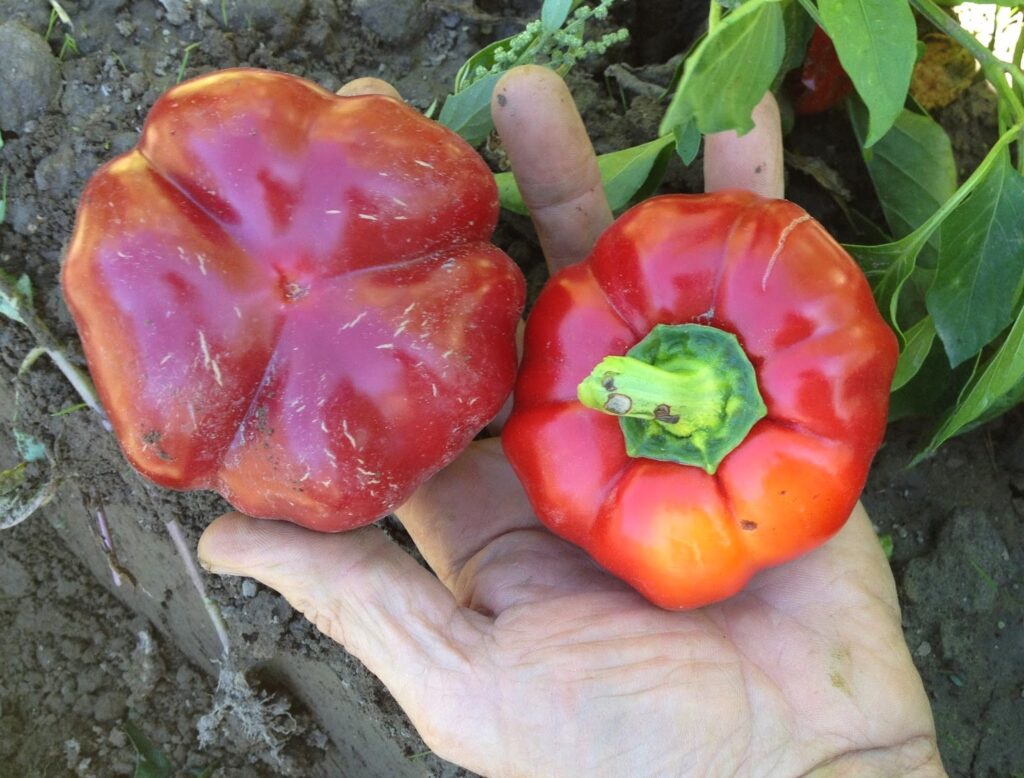
The Red ruffled pimento pepper variety is a lobed fruit which appears to look like a squat. This variety is thought to have come from the Spanish paprika. The fruit has dense thick fleshy walls, which are juicy and aromatically pleasant.
Furthermore, red ruffled pimentos produce between 6 and 15 fully ripened peppers. Some growers have noted that an extended season can increase this harvest to 20 peppers per plant. The fruit can be as long as 2 inches or 5 cm and 3 to 4 inches or 7 to 10 cm in diameter. See seed supplier. (Image: Seed Revolution Now)
True Heart Perfection Pimento Pepper
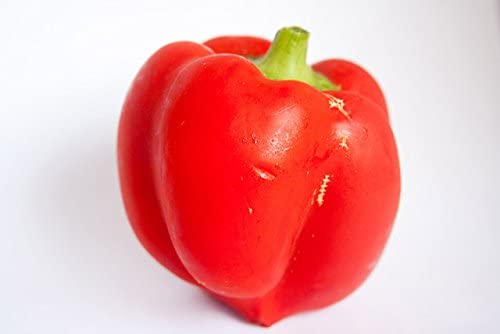
The True heart perfection pepper is yet another pimento pepper variety. You are also likely to find this variety stated as Truhart Perfection Pepper or Perfection Pepper which are its other common names. This variety is a typical example of the heart shaped pimento pepper mentioned earlier.
True heart is an heirloom variety thought to have been introduced to the United States some 100 years ago. In keeping with the pimento pepper cultivar, this variety also has thick sweet flesh. It is a popular pepper for canning and is also used in pimento cheeses. This variety is ready to harvest in 80 days. See seed supplier.
Lipstick Pimento Pepper
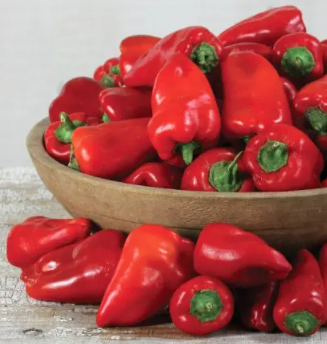
This is the interestingly named Lipstick pimento variety. It has a shape radically different from the previous two pimentos we have so far considered. This variety has a tapered fruit with bright red skin. Fruit can grow as long as 4 inches or 10 cm. True to pimentos, it also has thick flesh, sweet taste and flavor and zero heat.
The Lipstick pimento is a small plant whose fruit is mature for harvest in about 70 days which is earlier than the other varieties. See seed supplier.
Sheepnose Pimento Pepper
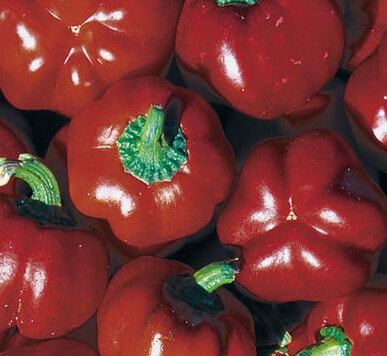
The Sheepnose pimento pepper is yet another variety of the popular pimento peppers. This variety is by Seed Savers Exchange (SSE) a U.S non-profit organization interested in the preservation of heirloom seed varieties. Sheepnose goes back to the 1940s and was given to SSE by the family of Mr Nick Rini.
This variety is also commonly known as the tomato-type pepper because the fruit resembles a ripe tomato. Sheepnose pimento pepper produces fruits with thick flesh which is sweet in flavor. The variety is also suitable for canning. See seed supplier.
Trinidad Pimento Peppers
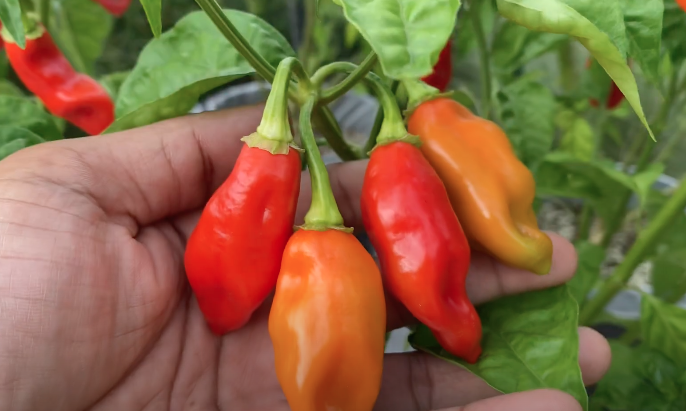
Trinidad pimento peppers are popular peppers on the Islands of Trinidad and Tobago. The pepper turns yellow, red or remains green when ripe. It is a flavourful pepper which has no heat. It produces elongated fruits with generally pointed ends.
Fruit grows in length to 3 inches or 7.6 cm and in diameter to 0.5 inches or 1.2 cm.This pepper is different from the forgoing pimentos we have considered. Although the plant is generally as small and short as the other pimentos, the Trinidad pimento pepper plant is significantly high yielding. The pepper is used in making salsa and can be substituted for bell peppers offering superior taste and flavor.
Pimento Pepper Scoville Units
It is often asked, how spicy are pimento peppers? Pimentos are pungent free. The peppers have zero bite and fall into the same heat category as bell peppers, as mentioned earlier. According to the Scoville Scale, pimento peppers have 100-500 SHU. SHU stands for Scoville Heat Units. This zero sting from these peppers also means pimento peppers have negligible levels of capsaicin, a compound responsible for generating heat in hot peppers and some spices.
Pimento vs Bell Pepper
Yet another question frequently asked is, is pimento the same as red bell pepper? While pimento peppers have been closely likened to bell peppers, they are not the same as bell peppers in all their variances i.e green, red and yellow bell peppers. Given, depending on variety (see pimentos varieties section), some pimento peppers look similar to regular bell peppers. However, the main difference between the two is that pimentos are distinctively sweet.
Pimentos are sweeter in taste than bell peppers although both pepper cultivars have zero heat. As mentioned earlier, certain pimentos have been described as being as sweet as an apple when fully ripe. Bell peppers do not come anywhere near this level of sweetness.
Furthermore, the flesh of the pimento is thick, succulent and aromatic in comparison to the bell pepper. For the reason of sweet flavor, pimento peppers substitute bell peppers easily. In fact, they have been used as superior alternatives in recipes that call for the use of bell peppers.
Another difference at plant level is that pimento plants are not as productive as bell pepper plants. Bell peppers produce more fruit per plant than an average pimento plant.
Overall, pimento peppers have been confused or mixed up with other similarly looking peppers. This has been primarily to do with similarities in looks. For example, a comparison has been made between pimento pepper vs scotch bonnet. These are worlds apart in bite. Scotch bonnet peppers are very spicy peppers with a heat rating of 100,000–350,000 Scoville units compared to pimentos’ 100 to 500 SHU.
Pimento Peppers Recipes
Another question which has been asked is, what are pimento peppers good for? The primary application of pimento peppers is in culinary recipe preparations. Their sweet taste and flavor of the peppers makes them applicable in a wide variety of food preparations.
Pimentos are a very nice cooking pepper that can go with any kind of dish. For some people pimento peppers are good for pickling, salads and even for ornamental purposes.
If you thought only bell peppers were good at this, pimento peppers are also good for making scrumptious stuffed peppers. They have an additional advantage over bell peppers and other peppers thanks to their tender skin which requires no peeling. For Mexican dishes, pimentos can be used in making the salsa for the red chilaquiles, for example. The pimentos are first dried and then seeded.
Nonetheless, the following are some scrumptious recipes to try made using pimentos.
| Garlicky Pimento Pepper Spread Recipe – this recipe produces a nice pimentos spread using all the regular and familiar ingredients, nothing exotic. As many as 7 pimentos will be required here, plus some garlic, olive oil, salt and pepper. The pimento peppers are first roasted for some 20 minutes or so together with the garlic before all the ingredients are combined in a food processor. When it is all said and done, what you get is a scrumptious spread enough to go around at a party. View Recipe. |
| Homemade Pimento Cheese Recipe – ever wondered how to make your own tasty pimento cheese at home? This is one of the best recipes to produce an excellent appetizer using pimento peppers. About 115 grams of diced pimentos are first roasted as part of the recipe preparation. In total, the recipe requires 25 minutes and will use other ingredients such as cream cheese, mayonnaise, garlic powder and onion powder. When everything has been combined, the cheese will require a 20 minute chill in the refrigerator for the flavors to infuse. View Recipe. |
| Marinated Pimento Peppers Recipe – this recipe calls for sweet peppers in general. It is a perfect match for pimentos. 10 pimento peppers will do for this recipe which also calls for low acidity white wine vinegar, fresh lemon juice, minced garlic and oregano (if you wanted something milder *basil* flowers or leaves could be experimented with here). The peppers are charred first and seeded after cooling down. The marinade will be made using vinegar, lemon juice, olive oil, garlic, oregano and salt. The peppers will eventually land in jars which will be filled with the marinade. View Recipe. |
| Pimento Butter Mashed Potatoes Recipe – this recipe produces a filling dish of mashed potatoes drizzled with pimento butter. The recipe takes 50 minutes to make and feeds 6 to 8 people. The preparation is in two parts namely pimento butter and mashed potatoes. To make the pimento butter, roasted pimento peppers, hot sauce and smoked paprika will be required alongside unsalted butter and kosher salt. View Recipe. |
Growing Pimentos
Growing pimento peppers is for the most part very similar to growing bell peppers and Capsicum annuum, more generally. However, some pimento varieties tend to start very slowly in fruit production only to begin picking up in the 2nd or 3rd year. Peak fruit production could even come in 5 years.
Furthermore, some varieties also take a long time to shift fruit from green to ripened red. The grower will need to exercise patience here until the fruit ripens and not give up too soon.
The fundamental growing conditions for pimento peppers are warm weather, full sun and rich well-drained soils. Your papers can be started indoors some 8 weeks prior to the last frost. The pepper seeds will need warm soil to successfully germinate. Under the right conditions, germination of pimento peppers can be expected within 14 days.
We recommend this resource on Growing Peppers in Home Gardens by the University of Minnesota Extension. The approaches taught in the resource are applicable to the majority of peppers including pimentos.
Conclusion
Pimento peppers are a sweet pepper cultivar that has zero heat. The pepper turns red when fully ripe and is used in a variety of culinary applications. It is also used as an alternative to bell peppers in certain recipe preparations. There are a number of pimento pepper varieties, some of which are heirloom varieties that have been cultivated for decades. Pimentos can be grown in the home garden fairly easily. However, they are not outstandingly productive plants. Each pimento plant typically produces very few fruits.
Random But Good Reads:
